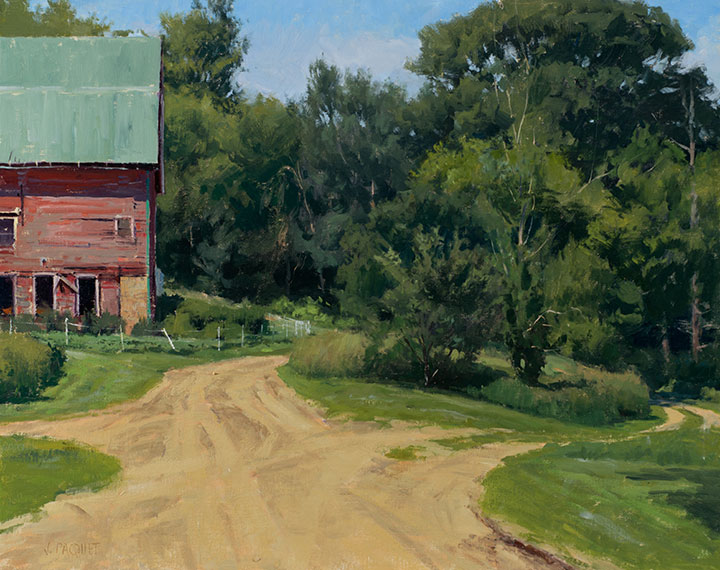Questions & Artists: Joe Paquet (Part II of II)
- Share
- Tweet
- Pin
- Share

We, living in Door County, are fortunate to have a large number of great artists living and working in the Midwest. This two-part Q&A is with one of these accomplished painters, Joe Paquet. Click here to read part one.
Those readers who remember some of my previous interviews will perhaps remember Derek Davis and recently, Carl Bretzke mentioning Mr. Paquet as being instrumental in their development as artists. Another great Midwestern artist and a man I paint with frequently, Rick Brawner, said Mr. Paquet is one of his two favorite painters. Mitchell Albala in his outstanding book, Landscape Painting has Joe’s painting “Edge of Evening” as an example of how to “do it.”
I think you will find this interview filled with some of Paquet’s interesting and informative thoughts on painting. You can see more of his work at joepaquet.com and subscribe to his newsletter, which I recommend.
Randy Rasmussen (RR): Your student, Carl Bretzke, who I interviewed last year, described briefly the palette you use. Can you give the readers a description of the prismatic palette?
Joe Paquet (JP): There really is no brief way to describe the prismatic palette but the starting precept is the nature of all sunlight is golden and all shadow is violet. Learning to prismatically adjust color for atmosphere, distance and angle of light is a discipline process.
RR: Has your work changed over the years?
JP: Yes, the work is always evolving. Studying the power of rich neutrals to serve color. Letting a concert of calligraphic marks stand as reality. I am always pushing myself. To me, if I am not on the edge of un-comfortability, I am not growing.
RR: Describe what one can expect at your workshops.
JP: A workshop with me is a possibility to look in the mirror and address your creative weaknesses and take your work farther with understanding. I love teaching and this will be my 21st year. I have had the good fortune to help many individuals achieve substantial skills and feed their souls.
RR: You judged the Door County Plein Air Festival several years ago. Did you enjoy the process?
JP: I loved Door County and the people I met but I do have an aversion to jurying. There is little upside to declaring one’s opinion in front of a crowd when a very few are rewarded.
RR: Looking at your paintings on your website, one can not help but notice the wonderful compositions. When you paint plein air do you occasionally change the scene to improve the composition?
JP: I worked for many years as a designer so composition on the fly has become second nature. A harmonious, elegant and truthful orchestration is always the aim.

“Crossroads Bubbling Springs”
RR: Can you tell our readers the names of several of your favorite painters?
JP: First would be Jean-Baptiste-Camille Corot. I especially enjoy his early work; so honest, deeply felt without affection. Michelangelo, almost beyond description. His work shows truth and power with withering sensitivity. Isaac Levitan is a brilliant Russian painter whose work has taught me that if one is sensitive enough, exaggeration become unnecessary. Finally Edward Hopper, brilliant and his own man.
RR: As a teacher do you see a common mistake that is repeated by the beginning and average painter?
JP: The biggest impediment I see in students is overcoming ego. Beyond that, the student must make an honest appraisal of their skill set. Most of my students are in mid-life and have in the past had achievement.
RR: Your travels as an instructor have taken you to many locations throughout the world. Do you have one place that you thought was the best place to paint?
JP: Without being flippant I will say the best place to be is where ever I am at the time. “Honor the gift of the day” is pretty much it.
RR: What do you think is the value of fine art in our rapidly changing high-tech world?
JP: That is a great question. The speed of information transfer has altered our ability to focus. Historically, fine art was the result of a slow-ripening, organic process of growth and evolution. We need to take time to really look and listen. Great art reveals itself to us in its own time. Emerson said if he could, he would put great art and statuary in everyone’s home because he believed it elevated us as individuals.
RR: Thank you.

